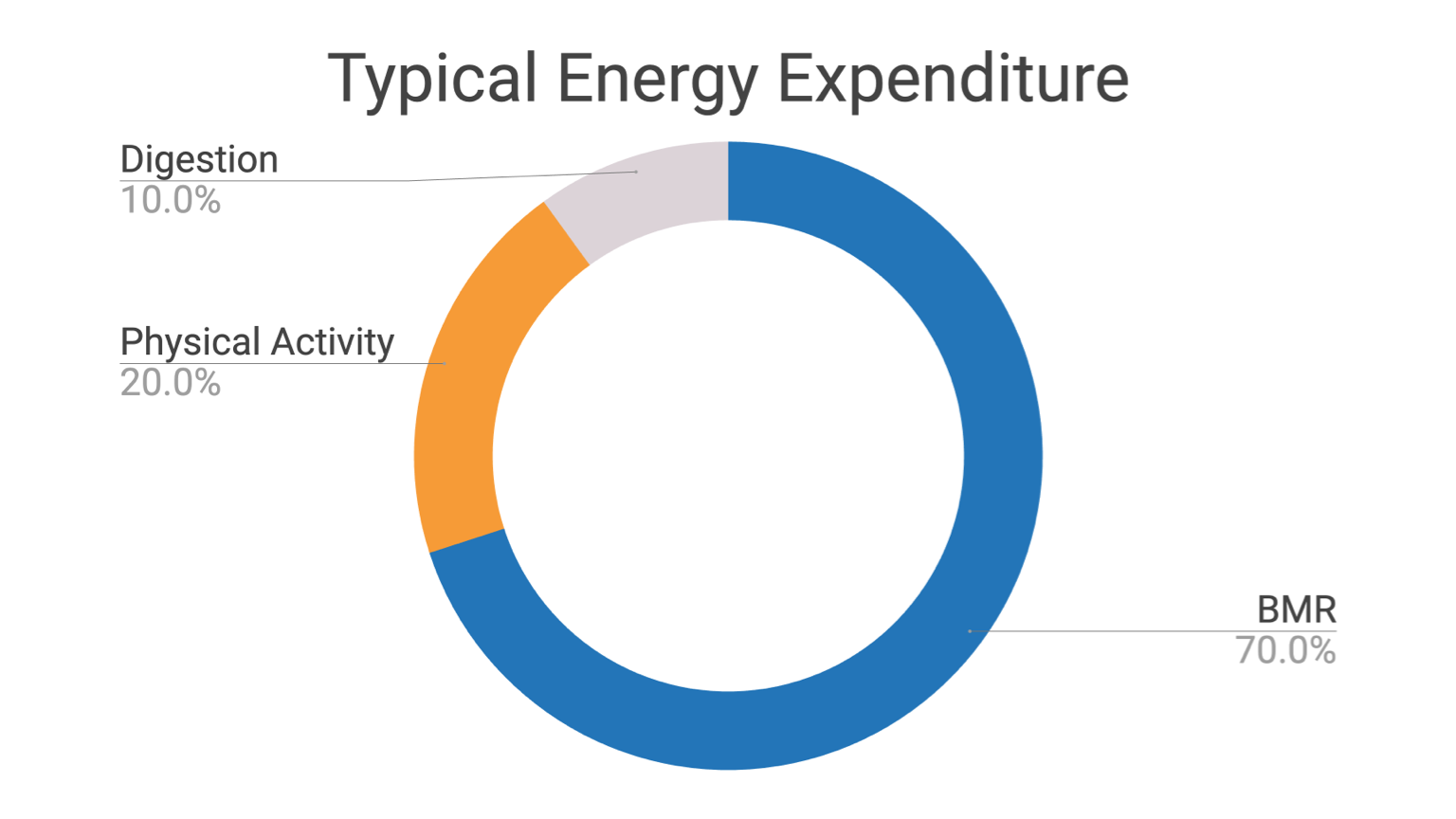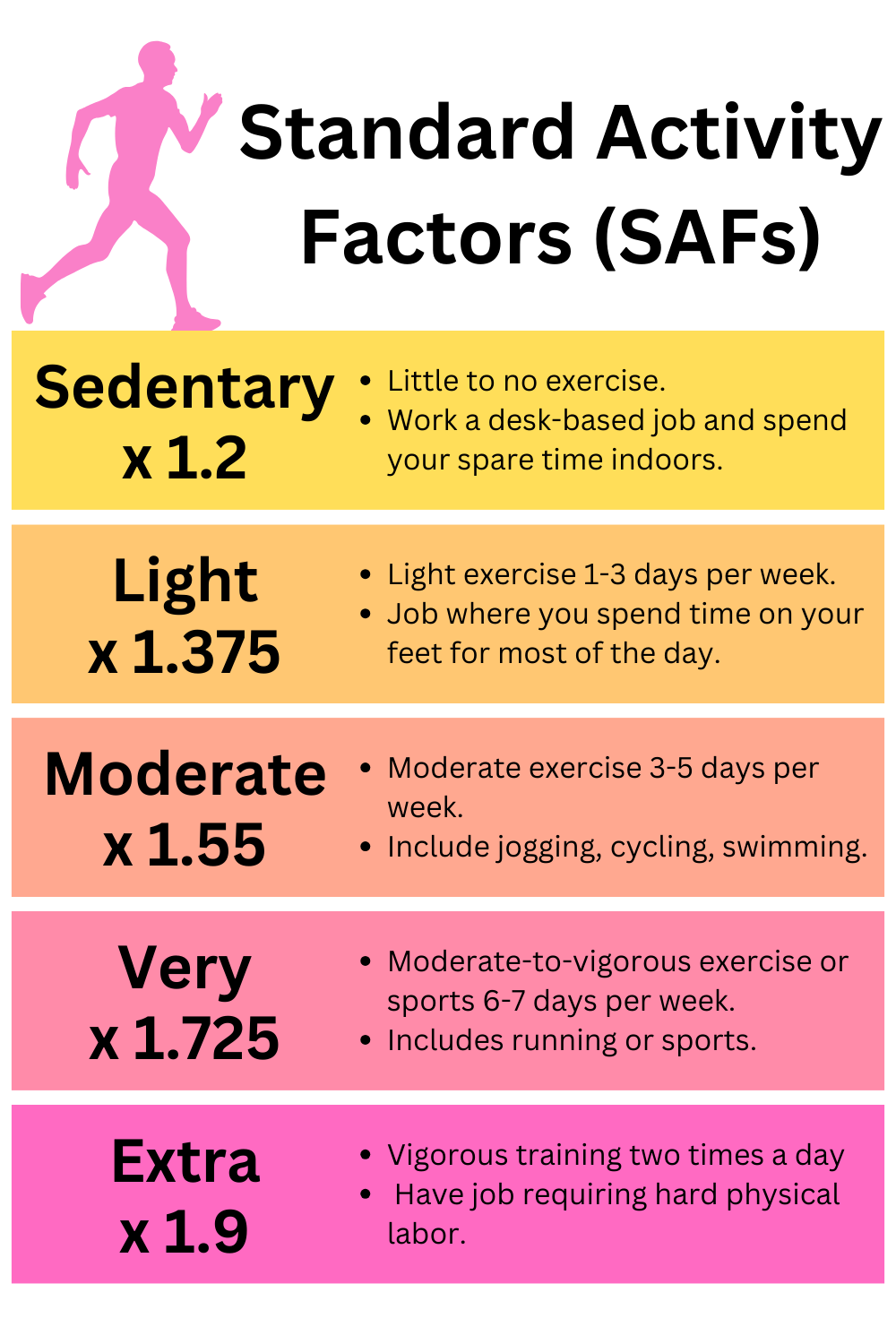The Exact Number of Calories You Need to Lose Weight

Losing weight can be a challenging struggle – both physically and emotionally.
Anyone who has lost weight before will know how difficult it is to battle cravings, maintain motivation and navigate the confusing and conflicting nutrition and fitness advice.
But the method behind weight loss is actually very simple. The only way to achieve sustained weight loss is with a calorie deficit.
But what exactly is a calorie deficit and how do you know what your calorie intake should be?
First, know about maintenance calories
Before we get to calorie deficits, we must first talk about maintenance calories.
Even if you are not exercising, your body is burning calories. All the time.
In fact, most of your calorie burn comes not from exercise, but from your resting metabolic rate (RMR). (Some people call this the basal metabolic rate, or BMR, instead.)
RMR is the number of calories your body needs at total rest to power your most basic functions. This includes the baseline activity of your organs, but does not include the digestion of food.
RMR typically increases with your weight and height, because you have a larger body mass to support.
However, you can expect your RMR to decrease over time as you age. This is because most people lose muscle mass and gain fat as they age.
Your RMR calories are NOT your maintenance calories
For most people, RMR is the most significant calorie burner. It accounts for about 70% of your total daily energy expenditure (TDEE).
Only 20% or so comes from calories burned during exercise. The remaining 10% actually comes from all the energy needed to digest the food you eat!

When you add all these parts up, you get your total daily energy expenditure, or TDEE for short.
TDEE is your maintenance calories – if you ate exactly at your TDEE, you would neither lose or gain weight.
Estimating your TDEE
A number of formulas for estimating TDEE have been created over time.
Most formulas work by first estimating your resting metabolic rate (RMR) and multiplying it by a Standard Activity Factor (SAF) depending on how much exercise you do.
These formulas are produced by statistical studies that look at representative populations, measuring their RMR and crunching the data to build accurate formulas.
Most online calculators use the Mifflin-St Jeor equation, which came out of a 1990 study of 498 people across both genders, all age groups and normal weight and obese persons.
The study introduced a RMR formula based on a person’s weight, height, age and gender.
For men, the formula is 9.99 x Weight + 6.25 x Height – 4.92 x Age + 5.
For women, the formula is 9.99 x Weight + 6.25 x Height – 4.92 x Age – 161.
Adjusting for your activity level
Once you have an estimate for your RMR, you need to multiply it by your activity level.
The activity levels are called Standard Activity Factor (SAF) scores, and they range from 1.2 (+20%) to 1.9 (+90%), depending on your level of physical activity.

Choosing a calorie deficit
If you eat at your maintenance calories (TDEE), it means you are eating just enough to maintain your current weight.
Your body is in an equilibrium where the number of calories you eat are equal to the number of calories you burn.
If you want to lose weight, you simply create a calorie deficit by eating fewer calories.
But what level of deficit is most effective and safe?
The 3,500 calorie rule
There are a number of ways to adjust TDEE to reflect a weight loss or weight gain goal.
A popular rule-of-thumb relies on the fact that 1 lb of fat is equivalent to 3,500 calories.
Many people therefore believe that maintaining a calorie deficit of 500 calories per day (3,500 divided by 7) will allow you to lose 1 lb per week.
You can use this idea to adjust the deficit or excess up and down to evaluate the impact it will have on your weight loss or weight gain goal.
This rule has some disadvantages and may not be accurate for long-term weight loss plans.
However, it is a reasonable starting point for many people and our calculator uses this principle to produce its estimates.
Once you have started your weight plan, you should review your progress after 3-4 weeks and adjust your calorie intake accordingly.
How to use the calorie calculator
Before you start, you’ll need a recent weight measurement. You can provide your weight in kilograms or pounds.
Then, start by filling out the online calculator. Input your height, either in feet and inches or centimeters.
You’ll also need to input your activity level. We use your activity level to estimate your daily calorie intake.
Gym Geek will first calculate your Resting Metabolic Rate (RMR). It then multiplies this by your Standard Activity Factor to calculate your TDEE.
TDEE is the number of calories you need to eat to maintain your current weight.
The calculator displays your TDEE in calories (kcal), but you can switch to kilojoules if you prefer (hello Australia!).
Weight loss goals
The calculator displays 4 weight loss goals from losing half a pound a week, up to 2 pounds per week.
For each goal, you can see the number of daily calories you should eat. You can also see how many weeks it will take you to achieve your goal.
Tips for safe weight loss
Minimum calorie intake
If you are a woman, you should never eat less than 1,200 calories per day.
And if you are a man, you should never eat less than 1,500 calories per day.
Extreme methods of weight loss can be dangerous and have serious health consequences
How much weight should I lose per week?
Most people looking to lose weight should try to lose around half a pound to 1 pound per week.
Losing weight quickly is dangerous and can have serious health consequences.
Most people should not attempt to lose more than 2 pounds per week without medical supervision.
Can I lose weight without cutting calories?
Yes! Remember, the key to weight loss is maintaining a calorie deficit relative to your TDEE.
That means you have two tools for weight loss – reducing your calorie intake or increasing your TDEE.
You can increase your TDEE by increasing your activity level. Engaging in regular physical exercise will increase your TDEE.
Who should not cut calories?
Do not use our calorie calculator of you are pregnant – Our calorie calculator will not provide an accurate reflection of your health status as your body undergoes significant changes during pregnancy. Consult a doctor or medical professional if you are concerned about your weight.
Do not use our calorie calculator if you have an eating disorder – Always consult a medical professional about your weight.
Finally, do not use our calorie calculator if you are under the age of 18 – RMR and TDEE estimates are not a suitable measure for children and teens under the age of 18.
